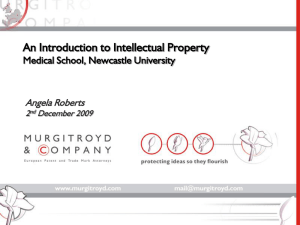What's in an idea?
advertisement
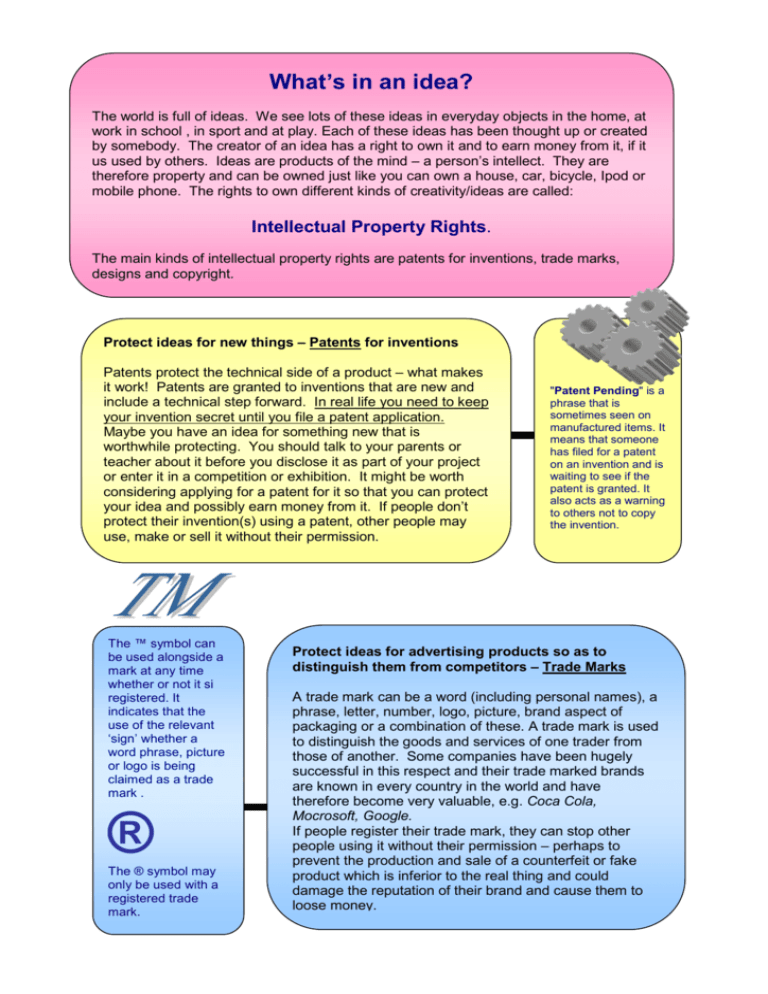
What’s in an idea? The world is full of ideas. We see lots of these ideas in everyday objects in the home, at work in school , in sport and at play. Each of these ideas has been thought up or created by somebody. The creator of an idea has a right to own it and to earn money from it, if it us used by others. Ideas are products of the mind – a person’s intellect. They are therefore property and can be owned just like you can own a house, car, bicycle, Ipod or mobile phone. The rights to own different kinds of creativity/ideas are called: Intellectual Property Rights. The main kinds of intellectual property rights are patents for inventions, trade marks, designs and copyright. Protect ideas for new things – Patents for inventions Patents protect the technical side of a product – what makes it work! Patents are granted to inventions that are new and include a technical step forward. In real life you need to keep your invention secret until you file a patent application. Maybe you have an idea for something new that is worthwhile protecting. You should talk to your parents or teacher about it before you disclose it as part of your project or enter it in a competition or exhibition. It might be worth considering applying for a patent for it so that you can protect your idea and possibly earn money from it. If people don’t protect their invention(s) using a patent, other people may use, make or sell it without their permission. The ™ symbol can be used alongside a mark at any time whether or not it si registered. It indicates that the use of the relevant ‘sign’ whether a word phrase, picture or logo is being claimed as a trade mark . ® The ® symbol may only be used with a registered trade mark. "Patent Pending" is a phrase that is sometimes seen on manufactured items. It means that someone has filed for a patent on an invention and is waiting to see if the patent is granted. It also acts as a warning to others not to copy the invention. Protect ideas for advertising products so as to distinguish them from competitors – Trade Marks A trade mark can be a word (including personal names), a phrase, letter, number, logo, picture, brand aspect of packaging or a combination of these. A trade mark is used to distinguish the goods and services of one trader from those of another. Some companies have been hugely successful in this respect and their trade marked brands are known in every country in the world and have therefore become very valuable, e.g. Coca Cola, Mocrosoft, Google. If people register their trade mark, they can stop other people using it without their permission – perhaps to prevent the production and sale of a counterfeit or fake product which is inferior to the real thing and could damage the reputation of their brand and cause them to loose money. Protect ideas for how a product should look – Designs A design registration protects the outward appearance of a product and covers the shape, pattern, texture and ornamentation. In order to be registered a design must be new must be different and distinctive in overall appearance to other known designs. Typical types of design registrations are for manufactured products such as the shape of a shoe, jewelry, housewares, electrical appliances, vehicles and leisure goods. An industrial design is what makes a product attractive and appealing and make people want to buy it. When an industrial design is registered, the holder receives the right to prevent unauthorized copying or imitation by others. This includes the right to prevent others from making, selling or importing any product in which the design is incorporated or to which it is applied without permission. An UNREGISTERED COMMUNITY DESIGN (UCD) is an EU wide right which gives its owner the right to prevent unauthorised copying of a design throughout the European Union. There is no registration process and the UCD comes into existence automatically from the date when the design is first made available to the public. It lasts for a period of 3 years from that date. It can be particularly useful for clothing and fashion designs which may have a very short or seasonal lifespan Protect how original ideas for new music, books, art, movies are expressed - Copyright It is important to show that copyright is claimed in a work. Works should be clearly marked to show who the copyright owner is and the date from which copyright is claimed. The internationally recognised symbol © is normally used to indicate that a work is protected by copyright. Example: © Copyright Irish Patents Office 2010. Copyright protects musical, artistic and literary works. Copyright protection is automatic. The instant you draw a picture, compose music or write a book or poem your works are protected by copyright. There is no registration process. As the copyright owner you must give permission for your work to be used or copied. The copyright owner has the rights for every way their work could be used – e.g. to turn their book into a film or to use part of it on a website, turning a poem into a song. The copyright owner, (composer, author, musician, record company) has the right to be rewarded if their copyright works are used or copied. The internet has become a huge storehouse of copyright works but just because music, movies, games etc. are available on the internet does not mean that in all cases anyone can download and reproduce the copyright works there without obtaining permission or making a payment. For more information on Intellectual Property Rights visit: www.patentsoffice.ie

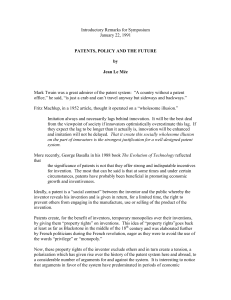


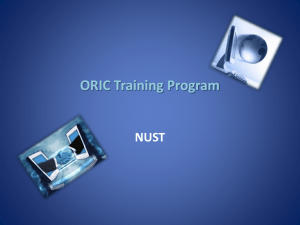

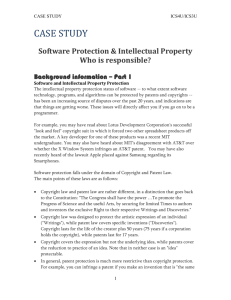
![Introduction [max 1 pg]](http://s3.studylib.net/store/data/007168054_1-d63441680c3a2b0b41ae7f89ed2aefb8-300x300.png)

